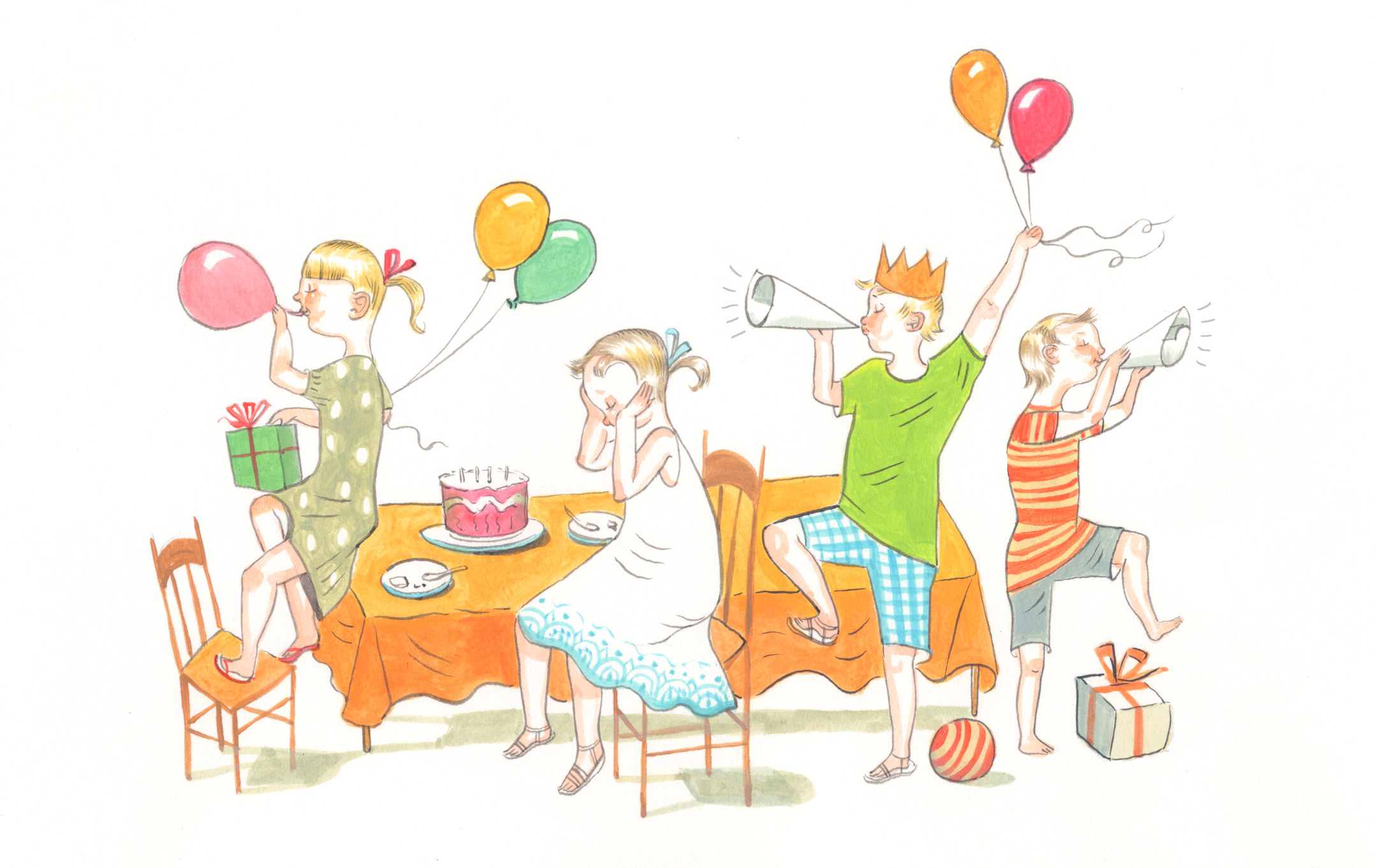
23 Feb Senses And Sensitivities
Monica Wright struggled to find a diagnosis for her daughter’s unusual behaviours, but persistence paid off.
I have a four-year-old daughter. When people first meet her, they usually describe her as lively, clever, outgoing, friendly, affectionate and talkative. As they get to know her better they’d probably like to add descriptors such as difficult, stubborn, irritable, impatient and volatile. Most people would put these traits down to a mix of personality and behaviour, but there’s another reason, known only to those close to her.
My daughter has a neurological condition called sensory processing disorder (SPD). SPD affects the way she receives and interprets sights, sounds, touch, tastes, smells and movement. People with SPD may feel overwhelmed by sensory information, or, conversely, seek out sensory experiences.
To some extent we all process sensations differently. For example, some people love roller-coasters, while other people feel unwell after a short ride in an elevator. One person might feel sick at a strong smell, while another barely seems to notice it.
What I see in my daughter is a multitude of sensitivities that impact on her everyday activities and our household. She is hyposensitive to movement and taste, which means she doesn’t receive enough stimulation in these areas from everyday activities. To compensate, she is constantly on the move and puts almost everything in her mouth. By contrast, she is hypersensitive to noise, temperature and sights. She avoids noisy settings, gets very upset by temperature changes (for example getting out of the bath), and becomes overwhelmed by clutter and bright colours. To make it more confusing, she seems to get mixed messages from touch – she likes to touch everything she sees, but wearing socks or a seatbelt can send her into a meltdown.
Little by little our household has adapted to her behaviours, to the point where we often don’t realise there is a problem until an outsider comments on the unusual way we do certain things. These include allowing my daughter to put her clothes in the dryer for a few minutes before she gets dressed; letting her wear her jiffies out instead of regular shoes; and watching her carefully to ensure she isn’t eating coins, leaves, buttons or rocks. When we make a cake, I give her a small cup of flour to eat to avoid her desire to ravenously eat flour straight from the container. We have become accustomed to the fact her socks need to be pulled up in a specific way, her shoes need to be fastened perfectly, and that wearing a seatbelt often causes her extreme discomfort.
Even though I’d been speaking to medical and educational professionals about her behaviours since she was about two, it was only recently that we found some answers. The problem was that when you looked at any of her behaviours in isolation, they seemed to be those of a normal fussy child. Because she is clever and sociable, most professionals I’d encountered told me not to be worried, that my daughter was just very active and a little “quirky”. Then I met an occupational therapist socially who was happy to have a chat about my daughter. I was amazed to finally find someone who could provide some answers and even give me the name of a condition that seemed to ‘fit’. We have since started working with another occupational therapist and found some wonderful resources on the internet.
My daughter’s therapy has focused on finding ways to help her control behaviours that may cause problems when she starts school. We’ve found that having a weighted toy or beanbag on her lap helps her to sit still; having a very active and rough play session helps her to then stay calm; and listening to music through headphones helps her work without continuously talking. It is rewarding to see that little by little my daughter is also noticing the changes in her behaviour. After a recent session in which she did a jigsaw puzzle while wearing headphones she looked at her therapist and said, “Wow, I was really quiet”.
Having a name for my daughter’s condition and a therapist to discuss her behaviour with has been an enormous relief. For so long, I felt as though I was the only one who could see the struggles my daughter faced with simple everyday activities, and it upset me that others would comment on how naughty or difficult she could be. Some of the problems she has are becoming more apparent as she gets older. When she was a toddler it seemed normal that she couldn’t sit still for more than two minutes, but the expectations of a four year old are much higher. Recently we attended a christening, and during the one-hour ceremony our other children were able to sit relatively still and quiet (of course we had promised a reward for this behaviour). However, our daughter seemed unable to control herself and was constantly moving and talking. While she wasn’t disruptive, her constant activity was obvious to everyone around us. I wondered how many of them were shaking their heads and thinking of her as the ‘naughty child’.
Parenting any child can be difficult as well as rewarding. Parenting a child with additional needs has some unique challenges. I have learnt that one of the challenges is finding the right information and the most suitable treatment sooner rather than later. Above all, the biggest challenge for me has been trusting my instincts enough to search for answers when I felt my child was having difficulties.
Illustration by Amanda Upton
For more information: SPDAustralia

